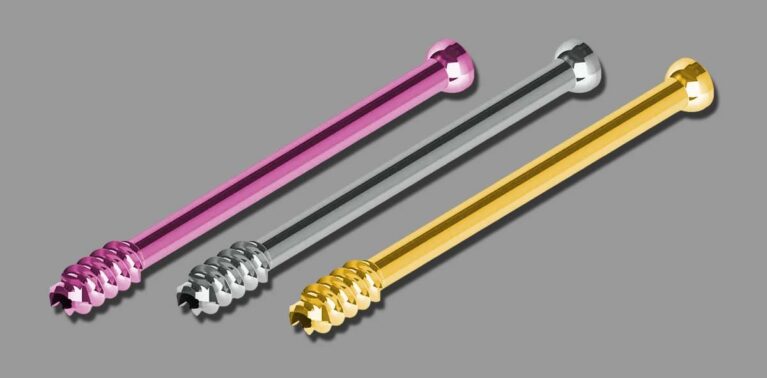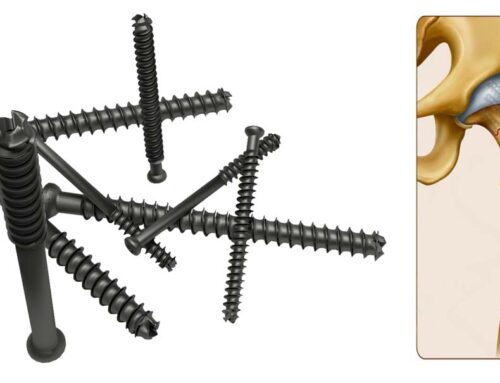Cannulated screws are a type of orthopedic screw that have a hollow central shaft, allowing them to be placed over a guide wire. This design facilitates precise placement and alignment, particularly in complex or minimally invasive surgical procedures.
Features and Design
- Hollow Core: The central hollow shaft (cannulation) allows the screw to be guided over a wire or pin, ensuring accurate positioning.
- Thread Design: The threads of the screw may vary in pitch and design, tailored to different types of bone (e.g., cortical or cancellous bone).
- Materials: Typically made from biocompatible materials such as stainless steel, titanium, or bio-absorbable materials.
Types of Cannulated Screws
- Partially Threaded Screws: Designed for compression and used in fractures where the screw threads only engage in one fragment of the bone, drawing the two fragments together.
- Fully Threaded Screws: Provide stable fixation without compression, used in situations where pulling the bone fragments together is not desired.
- Herbert Screws: A type of cannulated screw that is headless and often used in scaphoid fractures.
Applications
- Fracture Fixation: Commonly used in the fixation of fractures in small bones like the wrist, ankle, and foot, as well as in large bones like the femur and tibia.
- Arthrodesis: Used in joint fusion procedures to stabilize and promote bone fusion.
- Osteotomies: Employed to fix bones that have been surgically cut to correct deformities.
Advantages
- Precision: The guide wire ensures accurate placement, reducing the risk of misalignment.
- Minimally Invasive: Facilitates minimally invasive surgical techniques, which can lead to reduced recovery times and less postoperative pain.
- Versatility: Available in various sizes and designs, making them suitable for a wide range of orthopedic procedures.
Procedure for Insertion
- Preparation: The fracture or surgical site is prepared, and imaging techniques (e.g., fluoroscopy) are used to plan the screw placement.
- Guide Wire Insertion: A guide wire or pin is inserted into the bone, ensuring correct alignment and positioning.
- Drilling: A cannulated drill is passed over the guide wire to create a path for the screw.
- Screw Placement: The cannulated screw is inserted over the guide wire and advanced into the bone.
- Verification: Imaging is used to confirm the correct placement and positioning of the screw.
Considerations
- Bone Quality: The choice of screw type (partially vs. fully threaded) depends on the bone quality and the nature of the fracture.
- Guide Wire Technique: Proper technique in inserting the guide wire is crucial to ensure optimal screw placement.
- Screw Removal: Cannulated screws can be removed if necessary, but removal requires precision to avoid damage to the surrounding bone and tissue.
Conclusion
Cannulated screws are a valuable tool in orthopedic surgery, offering precision and versatility in the fixation of fractures and other bone-related procedures. Their design, which allows for guided insertion over a wire, makes them particularly useful in minimally invasive surgeries and in situations where accurate alignment is critical. Understanding the various types, applications, and procedural considerations is essential for their effective use in the operating room.




Leave A Comment